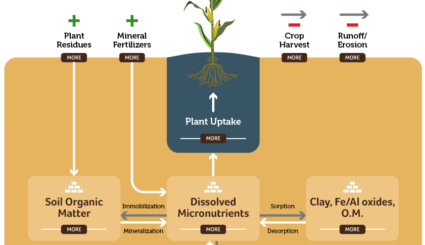Protein Pays with ESN

Wheat growers know that increased yields are only part of the story when it comes to increasing ROI and profitability in their acres.
As an important nutrient for new tillers, shoot growth, and grain fill, it’s important to find a nitrogen source that will stay in the plant-available form later in the growing season and during key wheat growth stages.
Most nitrogen uptake by a wheat plant takes place between about 40-80 days after planting and continues up to 120 days after planting. Thanks to its unique controlled-release technology, ESN is a superior source to meet this long-season demand.
Benefits over traditional nitrogen
ESN outperforms conventional nitrogen forms by providing a continuous nitrogen supply when wheat needs it most. It also offers growers the flexibility to blend with other dry fertilizers, maximum crop safety, a convenient application window, and protection for the environment through reduced leaching, denitrification and volatilization. This all adds up to maximum yield and quality for your wheat crop.
Results from the field
A two-year study in Minnesota demonstrated the effect of ESN on protein levels in spring wheat. In this trial, ESN incorporated three days before planting increased protein levels compared to urea. ESN increased grain protein levels at both the 60 and 120 lb N/acre rate (see photo). Fifty to 75% of the applied N as ESN was sufficient to maximize grain protein depending on N rate.
Increased nitrogen availability translates to increased protein levels and yield, and therefore higher profits and premiums.
Do you have questions about how protein pays with ESN? Tweet us at @SmartNitrogen.


